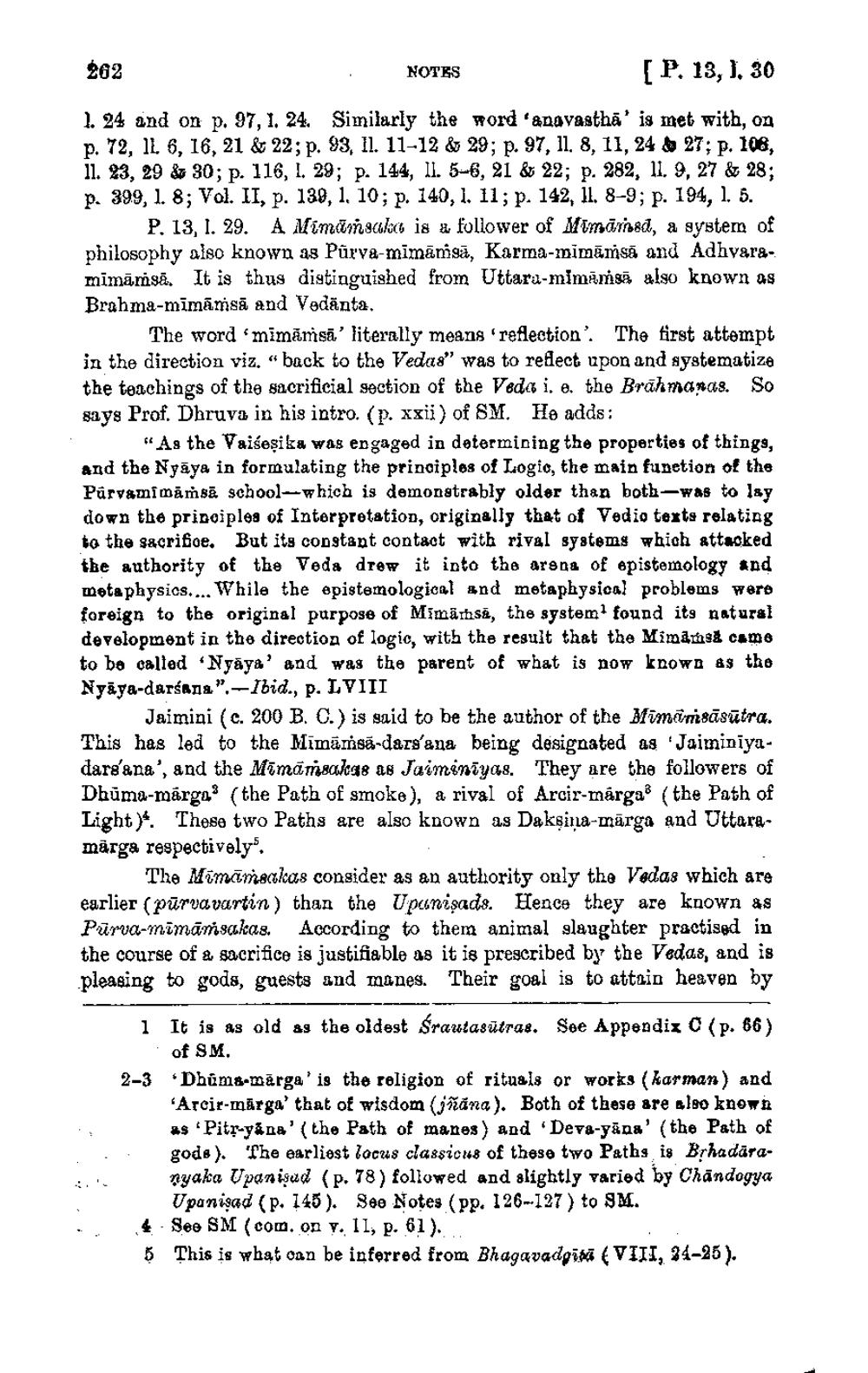________________
462
NOTES
[P. 13, 1. 30
1. 24 and on p. 97, 1. 24. Similarly the word 'anavastha' is met with, on
.72. 11. 6. 16. 21 & 22:p. 93. 11. 11-12 & 29; p. 97. 11. 8. 11. 24 & 27: P. 108. 11. 23, 29 & 30; p. 116, I. 29; p. 144, II. 5-6, 21 & 22; p. 282, 11. 9, 27 & 28; p. 399, 1. 8; Vol. II, p. 130, 1. 10; p. 140, 1. 11; p. 142, 11. 8-9; p. 194, 1. 5.
P. 13, I. 29. A Mimarneulico is w follower of Mimarned, a gyetem of philosophy also known as Pürva-mimāmgā, Karma-mimamsa and Adhyaremimārsā. It is thus distinguished from Uttara-mimamsa, also known as Brahma-mīmāmsā and Vedanta,
The word 'mimãmsā.' literally means reflection'. The first attempt in the direction viz. "back to the Vedas" was to reflect upon and systematiza the teachings of the sacrificial section of the Vede i. e. the Brāhmanas. So says Prof. Dhruva in his intro. (p. xxii) of SM. He adds :
"As the Vaišeșika was engaged in determining the properties of things, and the Nyāya in formulating the principles of Logic, the main funetion of the Půrvamimāṁsā school-which is demonstrably older than both-was to lay down the principles of Interpretation, originally that of Vedio texts relating to the sacrifoe. But its constant contact with rival systems which attacked the authority of the Veda drew it into the arena of epistemology and metaphysics.... While the epistemological and metaphysical problems were foreign to the original purpose of Mimārsă, the system found its natural development in the direction of logic, with the result that the Mimausa como to be called Nyaya' and was the parent of what is now known as the Nyāya-darśana".-Ibid., p. LVIII
Jaimini (c. 200 B. C.) is said to be the author of the Mimūnsāsūtra. This has led to the Mimārsă-dars'ana being designated as Jaiminiyadars'ana', and the Māmāmsaleas as Jaimanīyes. They are the followers of Dhūma-márga (the Path of smoke), a rival of Arcir-márga (the Path of Light). These two Paths are also known as Dakşiņa-nārga and Uttaramarga respectively,
The Mināmeckas consider as an authority only the Vedas which are earlier (pūrvavartin) than the Upunişads. Hence they are known as Purva-mīmāṁsakas. According to them animal slaughter practised in the course of a sacrifice is justifiable as it is prescribed by the Vedas, and is pleasing to gods, guests and manes. Their goal is to attain heaven by
Stival
1 It is as old as the oldest frautasūtras. Soe Appendiz C (p. 66 )
of SM. 2-3 Dhûms-marga' is the religion of rituals or works (karman) and
'Arcir-märga' that of wisdom (ñana). Both of these are also known * Pitryana' (the Path of manes) and Deva-yana' (the Path of gode ). The earliest locus classicus of these two Paths is Brhadara. nyaka Upanisud (p. 78) followed and slightly varied by Chandogya
Upanişad (p. 145). See Notes (pp. 126-127) to SM. 4 See SM (com. on y. 11, p. 61). $ This is what oan be inferred from Bhagavadgidi (VIJI, 24-25).




